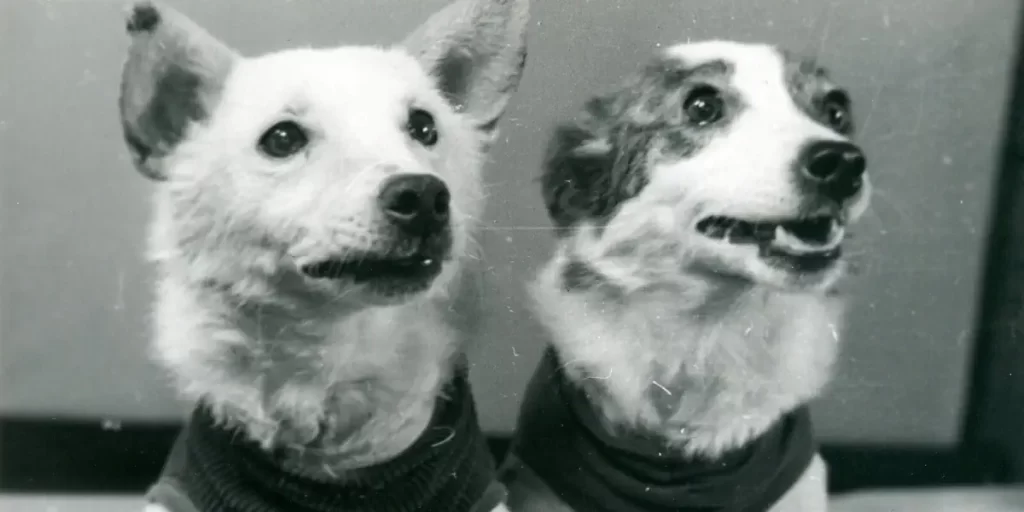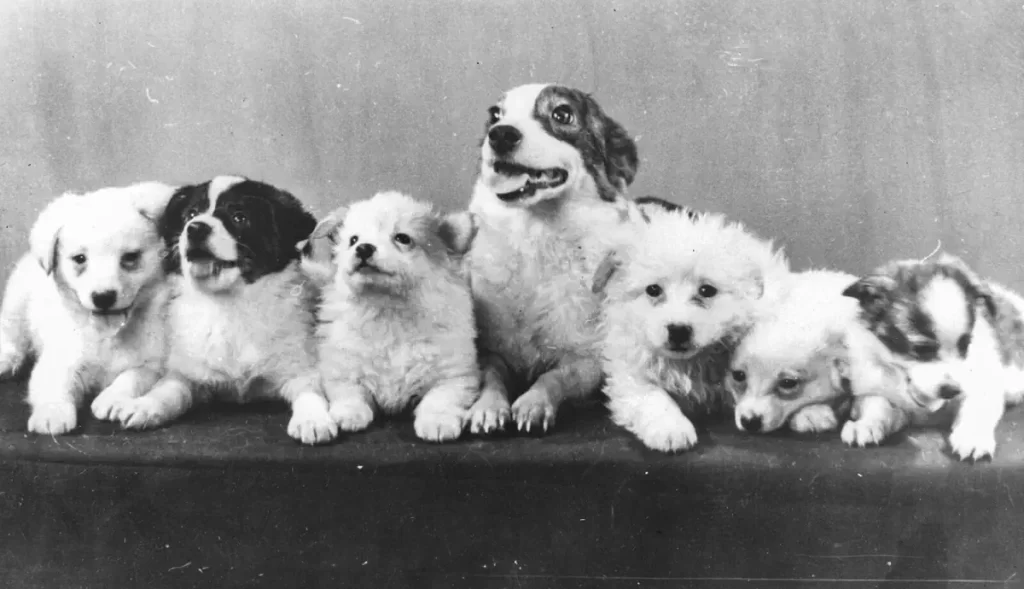On August 20, 1960, the first animals and plants returned alive from an orbital spaceflight. Launched on August 19, the Soviet Union’s Korabl-Sputnik 2 (also known as the Sputnik 5) was the first spaceflight to send animals and plants into orbit and return them safely back to Earth. it paved the way for the first human orbital spaceflight, Yuri Gagarin’s Vostok 1, which was launched on April 12, 1961.
Today’s (August 20) story of what happened this day in Science, Technology, Astronomy, and Space Exploration history.
The first animals and plants that returned alive from an orbital spaceflight
Belka and Strelka’s story unfolds against the backdrop of the Cold War, a period marked by the intense space race between the Soviet Union and the United States. Following the groundbreaking launch of Sputnik 1 in 1957, the Soviet space program accelerated its efforts, aiming to achieve more ambitious milestones in space exploration. It was in this context that Belka and Strelka, two dogs, were selected for a mission that would etch their names in history.
These canine cosmonauts were carefully chosen for their suitability for space travel, including factors like temperament and size. Their training was rigorous, preparing them for the conditions they would face in space, including acclimation to confined spaces and wearing specially designed space suits. On August 19, 1960, Belka and Strelka were launched into orbit aboard Sputnik 5, also known as Korabl-Sputnik 2. The mission was a critical step forward; it aimed to understand the effects of space travel on living organisms and to test the spacecraft’s life support systems.
Belka (means “Squirrel”) and Strelka (means “Little Arrow”) were accompanied on their historic flight by 40 mice, 2 rats, and several plants.
The Korabl-Sputnik 2 spacecraft had a mass of 4600 kg (10,141 lbs) and contained a hermetically sealed pressurized cabin. There was a temperature and pressure monitoring system for the biological subjects and cosmic rays, X-ray, and ultraviolet radiation detectors. Power was provided by solar cells and chemical batteries.
The objectives of the spaceflight were:
- Putting a spacecraft that could potentially carry a cosmonaut into a circular Earth orbit
- Testing the life-support functions of the biological cabin
- Studying the effects of orbit and space environment on biological and botanical specimens (animals and plants)
- and to re-enter from orbit and retrieve the cabin and specimens.
Belka and Strelka: the first dogs returned alive from an orbital spaceflight

During their spaceflight, which lasted a day, Belka, Strelka, and their friends orbited the Earth three times. The capsule was equipped with life support systems to ensure their survival, and their vital signs were closely monitored throughout the flight. During the fourth orbit, telemetry revealed that one of the dogs had suffered seizures and vomited, so ground control decided to end the spaceflight. All of the animals were recovered safely.
Their safe return to Earth on August 20, 1960, was a monumental achievement. It not only demonstrated that living organisms could survive orbital spaceflight but also that they could return safely. This milestone was crucial in paving the way for human spaceflight, contributing significantly to the body of knowledge necessary for sending humans into space. The successful return of Belka and Strelka was instrumental in validating the safety systems and life support needed for future astronauts, setting the stage for Yuri Gagarin’s historic spaceflight the following year.
After their mission, Belka and Strelka became symbols of the Soviet space triumph. Their story was celebrated in various media, capturing the public’s imagination. The animals’ successful return from space gave confidence that a human being can also endure such an orbital spaceflight.
A few months after that flight, Strelka gave birth to six healthy puppies. One of the pups, named Pushinka, was given to Caroline Kennedy, daughter of U.S. President John F. Kennedy, as a present from Soviet leader Nikita Khrushchev.

After their orbital spaceflight, both Belka and Strelka lived their lives in peace and comfort at the State Research and Testing Institute of Aviation and Space Medicine. Both dogs died at a very old age.
Today, a preserved Belka can be seen in the Memorial Museum of Astronautics in Moscow. Strelka was also preserved and is often sent “on travel” by the museum.

Belka and Strelka became the first dogs that returned alive from an orbital spaceflight. But, actually, they were not the first dogs to return from space alive.
Before them, the Soviets sent a few dogs into space (the Soviets were using dogs for the spaceflight tests while the United States was using monkeys).
For example, the first dogs launched into space were Tsygan and Dezik, who were aboard the R-1 IIIA-1. The two dogs reached space on July 22, 1951, but did not orbit, they performed a suborbital spaceflight.
A sub-orbital spaceflight is a spaceflight in which a spacecraft reaches outer space but does not complete one orbital revolution.
Tsygan and Dezik were the first mammals successfully recovered from spaceflight.
The first animal to orbit Earth: Laika
The first animal to orbit Earth was the famous Soviet space dog Laika (c. 1954 – 3 November 1957), who launched into space aboard Sputnik 2. Unfortunately, Laika died horribly from overheating. At the time, Soviet authorities lied about her death: they claimed that she died when her oxygen ran out on day six and passed away peacefully. The true cause and time of her death were not made public until 2002.
There was also another tragedy just a month before the orbital spaceflight of Belka and Strelka: two other dogs, Bars (“snow leopard”) and Lisichka (“little fox”) were also on a mission to orbit as a part of the Soviet Union’s Vostok program but died after their rocket exploded 28.5 seconds into the launch on July 28, 1960. Bars was also known as Chayka (“seagull”).

August 20 in Science, Technology, Astronomy, and Space Exploration history
- 1960: First animals and plants returned alive from space
- 1977: Voyager 2 was launched
Sources
- Korabl-Sputnik 2 (Sputnik 5) on Wikipedia
- Sputnik 5 on the NASA website
- “Training, puppies, and care. How Belka and Strelka lived before and after the flight” on the Moscow Mayor’s official website
- Soviet space dogs on Wikipedia
- Moon Landings: All-Time List [1966-2025] - February 2, 2025
- What Is Max-Q and Why Is It Important During Rocket Launches? - January 16, 2025
- Top 10 Tallest Rockets Ever Launched [2025 Update] - January 16, 2025
